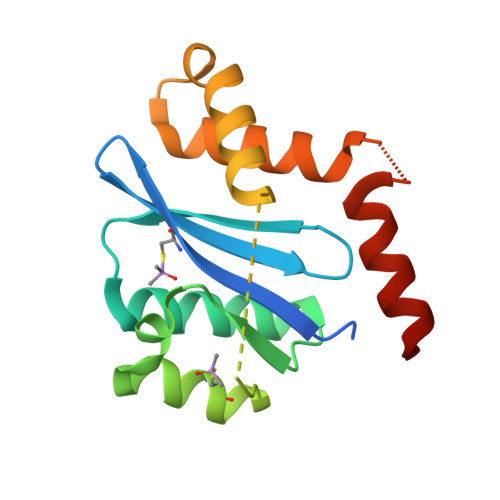HIV-1 integrase tetramers are the antiviral target of pyridine-based allosteric integrase inhibitors.
Koneru, P.C., Francis, A.C., Deng, N., Rebensburg, S.V., Hoyte, A.C., Lindenberger, J., Adu-Ampratwum, D., Larue, R.C., Wempe, M.F., Engelman, A.N., Lyumkis, D., Fuchs, J.R., Levy, R.M., Melikyan, G.B., Kvaratskhelia, M.(2019) Elife 8
- PubMed: 31120420
- DOI: https://doi.org/10.7554/eLife.46344
- Primary Citation of Related Structures:
6NUJ - PubMed Abstract:
Allosteric HIV-1 integrase (IN) inhibitors (ALLINIs) are a promising new class of antiretroviral agents that disrupt proper viral maturation by inducing hyper-multimerization of IN. Here we show that lead pyridine-based ALLINI KF116 exhibits striking selectivity for IN tetramers versus lower order protein oligomers. IN structural features that are essential for its functional tetramerization and HIV-1 replication are also critically important for KF116 mediated higher-order IN multimerization. Live cell imaging of single viral particles revealed that KF116 treatment during virion production compromises the tight association of IN with capsid cores during subsequent infection of target cells. We have synthesized the highly active (-)-KF116 enantiomer, which displayed EC 50 of ~7 nM against wild type HIV-1 and ~10 fold higher, sub-nM activity against a clinically relevant dolutegravir resistant mutant virus suggesting potential clinical benefits for complementing dolutegravir therapy with pyridine-based ALLINIs.
Organizational Affiliation:
Division of Infectious Diseases, School of Medicine, University of Colorado, Aurora, United States.
















